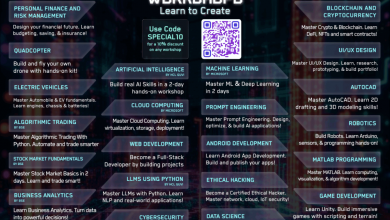AI Tools That Are Actually Saving Time (and Which Ones to Ditch)

AI tools are everywhere in 2025. From helping write emails to organizing your entire business workflow, they promise to save time and make life easier. But here’s the truth: not all of them deliver. Some AI apps are powerful and practical. Others just pile on noise, waste time, or need so much fixing you end up doing the work twice.
So, how do you know what to keep—and what to delete? This article cuts through the hype and looks at the tools that actually help busy professionals work smarter. We also highlight the ones that sound cool but fail to deliver real value. With input from experts in marketing, tech, and operations, you’ll get real insights into which AI tools are worth your time—and which ones to ditch.
The best AI tools make your job easier without needing babysitting. They do something you used to do manually, but faster and better. Here are a few that are changing the game:
- Project Automation Platforms – Tools like FuseBase are saving businesses hours each day. They combine AI, automation, and collaboration in one place, so teams don’t have to switch between ten apps to get work done.
Pavel Sher, Founder of FuseBase, built his platform to solve that exact problem:
“I’ve launched multiple productivity tools over the years, and FuseBase came from a simple idea: how can we help teams stop wasting time on admin? One law firm we worked with saved over 40 hours a month just by automating their client onboarding process. That’s time they now spend on billable work, not chasing paperwork. When AI actually lets you focus on what matters, that’s when it works.”
- AI Scheduling Assistants – These tools automatically find meeting times, sync calendars, and follow up with reminders. For solo entrepreneurs and large teams alike, they take a major chore off your plate.
- Email & Copywriting Tools – While not perfect, AI writing tools like ChatGPT (when fine-tuned for your brand) can cut first-draft time in half. They’re great for outlines, emails, and short-form content when you’re on a deadline.
Tools That Sound Great—But Waste Time
Not every AI tool is useful. Some are just flashy tech that solves a problem you never had in the first place. Others sound good but require so much training, tweaking, or correcting that they actually slow you down.
- “AI Brainstorming” Apps – These promise to spark creativity but often return ideas that are generic or off-topic. If you’re constantly editing their suggestions or trying to make sense of vague content, it’s not saving you time—it’s eating it.
- Overloaded Dashboard Tools – Some platforms try to be “everything in one place,” but end up becoming cluttered. They require constant updates or manual input, defeating the whole point of automation.
- Voice-to-Note Apps – While handy in theory, many still struggle with accuracy. Missed words, poor formatting, and the need to re-type large chunks make them more frustrating than helpful.
Andrew Dunn, VP of Marketing at Zentro Internet, has seen this firsthand with AI reporting tools:
“We tested an AI reporting dashboard that looked great on paper. But the data syncing was off, and we ended up cross-checking everything manually. It took more time than our old spreadsheet. The tools that win are the ones that integrate easily and actually reduce steps—not add them.”
How to Choose AI Tools That Actually Help
So how do you avoid the AI time traps and focus on tools that deliver? Use these filters before committing:
- Is it solving a real problem I have right now?
- Does it reduce steps—or just move them around?
- Can it work with the tools I already use?
- Is it helping my team—or adding confusion?
- How long does it take to train, set up, or fix?
If it doesn’t pass those questions, it’s probably not worth your time.
Josiah Lipsmeyer, Founder of Plasthetix, uses AI tools daily in marketing campaigns—but only the ones that deliver results:
“In our agency, we test every tool before we roll it out for clients. Some AI apps make promises they can’t keep especially around design or content. But when we found a platform that automated campaign reports and client updates, it saved us five hours per week. For me, it’s not about what’s trending—it’s about what gives us time back.”
The Future of Work Is AI-Assisted But Still Human-Led
AI is here to stay, and that’s a good thing. But it’s only helpful when it makes our lives simpler. The smartest professionals in 2025 aren’t just using AI—they’re choosing the right tools with purpose. They test, they tweak, and they know when to walk away from something that doesn’t deliver.
The key is to stay focused on your goals. Use AI to automate the tasks you don’t need to touch. Free up your team’s time for strategy, creativity, and connection—the work machines can’t replace. And always remember: it’s not the number of tools you use. It’s how much time they give back.
Final Thoughts: Cut the Noise, Keep the Value
In a world full of “AI-powered everything,” the winners are those who focus on real value. Ask yourself: is this tool making my day easier? If the answer isn’t a clear “yes,” it might be time to hit delete.
Read More From Techbullion

Source: AI Tools That Are Actually Saving Time (and Which Ones to Ditch)




